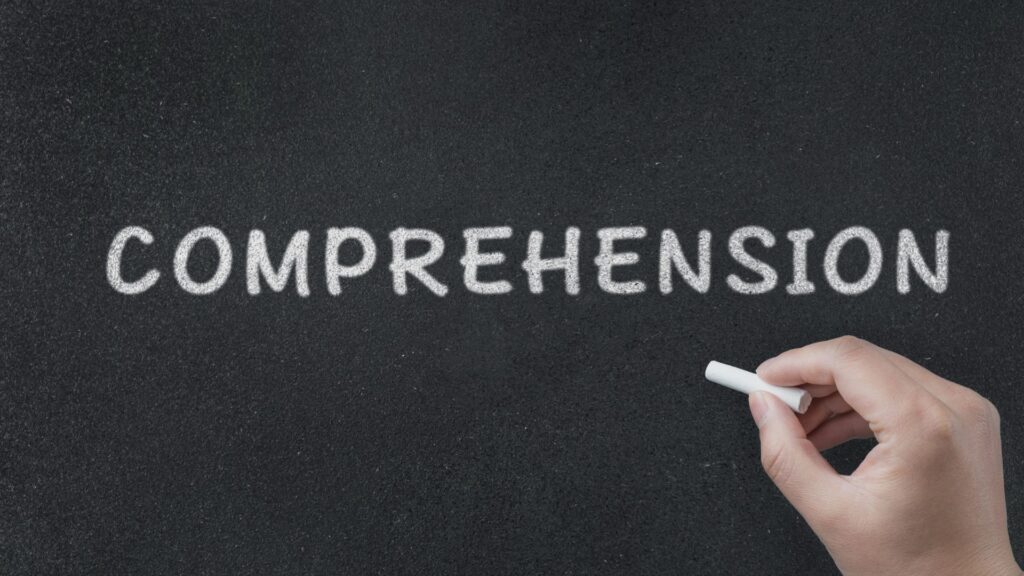If you’re a dyslexic reader, you might face some unique challenges but fear not because we’ve got some fun and effective tips to help you improve your reading skills. Dyslexia-friendly reading strategies don’t have to be boring or daunting. They can be exciting, engaging, and even enjoyable! In this article I’ll talk about eight dyslexia tips to improve reading.
I once volunteered at an NGO for a short period, where my task was to read out to dyslexic kids. I have seen and observed dyslexia from very close proximity, and remember those kids wanting to read on their own but weren’t able to. For them, I researched how one can read effectively, even with dyslexia!
Dyslexia is a specific learning disability that affects reading and language processing, requiring specialized strategies for improvement. Multisensory Approach, Phonics Instruction, Reading Comprehension Strategies, Dyslexia-friendly Texts, Structured Literacy Programs, Assistive Technology, Reading Practice, and Supportive Environment are some strategies.
Whether you’re just starting or looking to level up your reading game, these top dyslexia tips will make reading more fun and rewarding. Let’s dive in and discover some creative ways to unlock the joy of reading!
8 Tips Dyslexia Tips to Improve Reading
1. Multisensory Approach

A multisensory approach involves engaging multiple senses while reading to reinforce learning. For example, using your finger or a marker to follow along with the text as you read helps track and focus on each word.
This kinesthetic feedback can enhance the connection between the visual and kinesthetic systems in the brain, aiding in reading fluency and accuracy. Here are some examples of how a multisensory approach can be beneficial for dyslexic readers:
A. Tracking with Finger or Marker
Dyslexic readers can use their fingers or a marker to track the text as they read. It helps with visual tracking, which is the ability to smoothly move the eyes from left to right and track the words on the page. It also provides kinesthetic feedback, as the movement of the finger or marker reinforces the connection between the visual and kinesthetic systems in the brain. This can aid in reading fluency, accuracy, and comprehension.
B. Tactile Activities
Dyslexic readers can benefit from incorporating tactile activities during reading instruction. This can include using manipulatives, such as letter tiles, sandpaper letters, or textured cards, to reinforce letter-sound correspondences or to build words. Tactile activities provide kinesthetic feedback and engage the sense of touch, which can help reinforce learning and improve memory retention.
C. Auditory Feedback
Dyslexic readers can benefit from auditory feedback during reading instruction. This can include reading text aloud or using text-to-speech software that reads aloud the text. Auditory feedback can help dyslexic readers with decoding, pronunciation, and comprehension, as it reinforces the connection between the visual and auditory systems in the brain.
D. Movement and Gestures
Dyslexic readers can benefit from incorporating movement and gestures during reading instruction. This can include using gestures to represent different sounds or actions related to the text or incorporating physical movements to reinforce concepts or ideas. Movement and gestures can help dyslexic readers better process and internalize information by engaging the kinesthetic system and reinforcing learning through physical actions.
2. Phonics Instruction

Phonics instruction focuses on teaching the relationship between letters and sounds. Dyslexic readers can benefit from explicit and systematic phonics instruction that involves breaking down words into individual sounds (phonemes) and blending them to read words. This helps develop decoding skills essential for accurate and efficient reading. Here are some key aspects of effective phonics instruction for dyslexic readers:
A. Phoneme Awareness
Dyslexic readers may struggle with identifying and manipulating individual sounds in words (phonemes). Phoneme awareness activities, such as isolating, blending, and segmenting sounds in words, can help dyslexic readers develop a strong foundation for decoding. These activities can be done orally or with visual aids, such as letter tiles or sound boxes, to reinforce the connection between letters and sounds.
B. Letter-Sound Correspondence
Dyslexic readers can benefit from explicit instruction on the relationship between letters and sounds. Teaching the most common letter-sound correspondences systematically, using a structured and sequential approach, can help dyslexic readers build a solid foundation in phonics. This includes teaching letter recognition, letter formation, and the sounds associated with each letter or letter combination.
C. Blending and Decoding
Dyslexic readers can practice blending sounds to decode words. This involves smoothly and accurately blending individual sounds to form words. Dyslexic readers can start with simple words and gradually progress to more complex words as their decoding skills improve. Providing ample practice opportunities and feedback can help reinforce blending and decoding skills.
D. Sight Words
Dyslexic readers can also benefit from learning sight words, which are words that do not follow regular phonics patterns and need to be recognized by sight. Sight word instruction can help dyslexic readers develop automaticity and fluency in reading common words frequently occurring in the text, which can enhance reading fluency and comprehension.
E. Multisensory Approach
A multisensory approach, which engages multiple senses (e.g., visual, auditory, kinesthetic) during phonics instruction, can be particularly effective for dyslexic readers. This can involve using manipulatives, such as letter tiles or sandpaper letters, to reinforce letter-sound correspondences or incorporating movement, gestures, or visual cues to support learning.
3. Reading Comprehension Strategies

Reading comprehension strategies help with understanding and making meaning from text. Dyslexic readers may struggle with comprehension due to difficulties with decoding, so using strategies such as summarizing, visualizing, and asking questions can enhance understanding.
These strategies encourage active engagement with the text and help build comprehension skills. Here are some effective reading comprehension strategies that can help dyslexic readers improve their understanding of the text:
A. Summarizing
Summarizing involves condensing a text’s main ideas and important details into a brief and coherent summary. Dyslexic readers can practice summarizing by retelling or writing a summary of what they read. This helps them identify and remember the text’s key points and promotes a deeper understanding of the material.
B. Visualizing
Visualizing involves creating mental images or visual representations of the text while reading. Dyslexic readers can be encouraged to create visual images in their mind’s eye as they read, which can help them better comprehend and remember the content. Visualizing can be particularly helpful for dyslexic readers in forming connections between words, concepts, and ideas.
C. Asking Questions
Asking questions before, during, and after reading can help dyslexic readers engage with the text and actively monitor their understanding. Encouraging dyslexic readers to ask questions about the text’s content, characters, plot, or other aspects can promote critical thinking, comprehension, and higher-order thinking skills.
D. Activating Prior Knowledge
Activating prior knowledge involves connecting new information to what one already knows. Dyslexic readers can be encouraged to activate their prior knowledge by relating the content of the text to their own experiences, background knowledge, or other texts they have read.
This helps dyslexic readers make connections and build upon their existing knowledge, which can enhance comprehension.
E. Monitoring and Clarifying
Dyslexic readers can be taught to actively monitor their understanding of the text and clarify any confusion or misunderstandings. They can be encouraged to stop and reflect on the meaning of the text, re-read difficult sections, or seek additional information to clarify their understanding.
This self-monitoring and clarifying process can help dyslexic readers identify and address comprehension difficulties.
4. Dyslexia-friendly Texts

Dyslexia-friendly texts are designed to make reading easier for individuals with dyslexia. Fonts such as OpenDyslexic are designed with weighted bottoms to help reduce letter and word confusion. Adjusting text size, spacing, and background color can also improve readability, making it easier for dyslexic readers to access and decode text. Here are some key features of dyslexia-friendly texts:
A. Dyslexia-friendly Fonts
Fonts such as OpenDyslexic are specifically designed with features like weighted bottoms of letters to help reduce letter and word confusion. These fonts are designed to be more easily distinguishable and can help dyslexic readers differentiate between similar-looking letters such as “b” and “d” or “p” and “q.” Dyslexia-friendly fonts can make reading more accessible for individuals with dyslexia by reducing visual distortions and confusion.
B. Adjusted Text Size and Spacing
Dyslexia-friendly texts often have adjustments in text size and spacing. Increasing the text size and spacing between words and letters can make it easier for dyslexic readers to track and decode text. This can reduce visual crowding and make recognizing and distinguishing individual words and letters easier.
C. Background Color
Adjusting the background color of the text can also improve readability for dyslexic readers. Using a tinted background, such as light yellow or light blue, can reduce visual stress and make it easier for dyslexic readers to focus on the text. The contrast between the text and the background is also important, as high contrast can make the text easier to read.
D. Simplified Formatting
Dyslexia-friendly texts often use simple formatting, such as left-aligned text, simple sentence structure, and clear paragraph breaks. This can help dyslexic readers follow the text flow and make understanding the structure of sentences and paragraphs easier.
E. Visual Cues
Dyslexia-friendly texts may also use visual cues like bullet points, headings, and numbered lists to help dyslexic readers navigate and comprehend the text. Visual cues can provide additional support in organizing information and improving comprehension.
5. Structured Literacy Programs

Structured literacy programs, such as Orton-Gillingham or Wilson Reading System, are evidence-based approaches that provide systematic, sequential, and explicit instruction in phonics, phonological awareness, and other reading skills.
These programs are designed specifically for individuals with dyslexia and provide a structured and comprehensive approach to reading instruction, targeting the underlying difficulties associated with dyslexia.
A. Systematic and Sequential Instruction
Structured literacy programs follow a structured and sequential approach to teaching reading skills. They start with basic phonics skills and gradually progress to more complex phonics patterns and reading strategies. This systematic and sequential instruction helps dyslexic readers build a strong foundation in reading, allowing them to progress at their own pace and gradually develop their skills.
B. Explicit Instruction
Structured literacy programs provide explicit instruction, meaning reading skills are taught directly and explicitly. Dyslexic readers are explicitly taught the relationships between letters and sounds, how to blend sounds to form words, and how to apply reading strategies to decode words and improve comprehension. This explicit instruction helps dyslexic readers develop a deep understanding of the reading process and empowers them with effective strategies to tackle reading challenges.
C. Multisensory Approach
Structured literacy programs often incorporate a multisensory approach, which involves engaging multiple senses during the learning process, such as visual, auditory, and kinesthetic. Dyslexic readers are encouraged to see, hear, and physically manipulate letters and words, strengthening their neural connections and improving retention of reading skills.
This multisensory approach can be particularly beneficial for dyslexic readers who may struggle with one sensory channel but excel in another.
D. Individualized Instruction
Structured literacy programs can be tailored to the individual needs of dyslexic readers. Dyslexic readers may have different levels of reading skills, strengths, and challenges. Structured literacy programs can be adapted to address the specific needs of each dyslexic reader, providing individualized instruction and support to help them progress and succeed in reading.
E. Targeting Underlying Difficulties
Structured literacy programs are designed specifically for individuals with dyslexia and target the underlying difficulties associated with dyslexia. These programs focus on building foundational reading skills, such as phonics, phonological awareness, decoding, fluency, and comprehension, in which dyslexic readers often struggle.
By addressing these underlying difficulties, structured literacy programs can help dyslexic readers overcome challenges and develop strong reading skills.
6. Assistive Technology

Assistive technology tools can provide additional support for dyslexic readers. Text-to-speech software can read aloud text, helping with decoding and comprehension. Audiobooks can provide an alternative way to access text. Speech recognition software can help with writing and spelling.
These tools can be beneficial for dyslexic readers in improving their reading skills and increasing access to information. Here’s a more detailed explanation of some common assistive technology tools that can provide additional support for dyslexic readers:
A. Text-to-speech Software
Text-to-speech software converts written text into spoken words, allowing dyslexic readers to listen to the text being read aloud. This can be helpful for decoding challenging words, improving reading fluency, and enhancing comprehension. Dyslexic readers can follow the spoken words while seeing the text, reinforcing the connection between spoken and written words.
B. Audiobooks
Audiobooks provide an alternative way for dyslexic readers to access text. It can help dyslexic readers engage with literature and other written materials without struggling with decoding challenges. Audiobooks can be a valuable tool for improving vocabulary, listening skills, and comprehension.
C. Speech Recognition Software
Speech recognition software allows dyslexic readers to speak into a device, which converts their speech into written text. This can benefit writing tasks, as dyslexic readers may struggle with spelling and writing difficulties.
Speech recognition software can help dyslexic readers express their ideas more easily and efficiently, reducing the barriers associated with writing and spelling challenges.
D. Dyslexia-friendly Fonts and Formatting
Dyslexia-friendly fonts, such as OpenDyslexic, and formatting techniques, such as increased line spacing and larger font sizes, can make reading materials more accessible for dyslexic readers. These fonts and formatting techniques are designed to reduce visual crowding and make it easier for dyslexic readers to recognize letters and words, which can improve reading accuracy and fluency.
E. Screen Overlays and Color Filters
Screen overlays and color filters can reduce visual stress and make reading on screens more comfortable for dyslexic readers. These tools can change the background color of text, adjust contrast, or add tint to the screen, which can help dyslexic readers with visual processing challenges read more effectively and with less discomfort.
7. Reading Practice

Regular reading practice is crucial for building reading skills. Dyslexic readers can start with materials that are at an appropriate reading level and gradually increase the difficulty as their skills improve. Consistent practice helps to reinforce phonics skills, build vocabulary, and improve reading fluency and comprehension. Here’s a more detailed explanation:
A. Appropriate Reading Level
Dyslexic readers can start with reading materials at an appropriate level of difficulty. Reading materials that are too challenging can lead to frustration and discouragement, while reading materials that are too easy may not provide enough opportunity for growth.
Finding materials that are at an appropriate reading level, based on the individual’s current reading ability, can help dyslexic readers build their skills in a gradual and manageable way.
B. Gradual Difficulty Increase
As dyslexic readers progress in their reading skills, it’s important to gradually increase the reading materials’ difficulty level gradually. This allows them to continue to challenge themselves and build on their progress. Starting with simpler texts and gradually moving to more complex texts with varied vocabulary and sentence structures can help dyslexic readers expand their reading abilities.
C. Reinforcement of Phonics Skills
Dyslexic readers often benefit from explicit and systematic phonics instruction, and regular reading practice provides an opportunity to reinforce these phonics skills. By encountering words with different phonetic patterns in context, dyslexic readers can practice applying their phonics skills to real-world reading situations, improving their decoding abilities and word recognition.
D. Vocabulary Building
Regular reading practice exposes dyslexic readers to a wide range of vocabulary. Building vocabulary is crucial for reading comprehension as it helps readers understand the meaning of words in context. Dyslexic readers can learn new words, reinforce known words, and improve their word recognition skills through regular reading practice.
E. Reading Fluency
Reading fluency refers to reading accurately, smoothly, and with appropriate expression. Regular reading practice helps dyslexic readers develop reading fluency by providing opportunities to practice reading smoothly and appropriately. Fluent reading enhances comprehension, allowing readers to focus on understanding the meaning of the text rather than struggling with decoding.
F. Comprehension Skills
Regular reading practice also helps dyslexic readers improve their comprehension skills. Through exposure to various texts, dyslexic readers can practice using reading comprehension strategies, such as summarizing, visualizing, and making connections, which aid in understanding and making meaning from the text.
8. Supportive Environment

Creating a supportive reading environment can help dyslexic readers feel more comfortable and confident. Good lighting, minimal distractions, and comfortable seating can improve focus and concentration.
Encouraging a positive mindset towards reading, and providing praise and reinforcement for effort and progress, can also motivate dyslexic readers to persevere and develop their reading skills. Here’s a bit more detail on each aspect:
A. Good Lighting
Good lighting is essential for reading as it reduces eye strain and makes it easier to focus on the text. Dyslexic readers may have visual processing challenges, and proper lighting can help reduce visual stress and enhance reading comfort.
B. Minimal Distractions
Dyslexic readers may struggle to filter distractions, so creating a quiet and distraction-free environment can improve focus and concentration. Minimizing noise, removing unnecessary visual distractions, and finding a calm reading space can help dyslexic readers stay focused on the text.
C. Comfortable Seating
Comfortable seating is important for reading, as discomfort or pain from sitting for long periods can distract dyslexic readers from focusing on the text. Providing ergonomic and comfortable seating options can help dyslexic readers stay engaged in reading without discomfort or distractions.
D. Positive Mindset
Encouraging a positive mindset towards reading is essential. Dyslexic readers may have experienced frustration or negative emotions related to reading difficulties. Encouraging a growth mindset, where effort and progress are praised, can motivate dyslexic readers to persevere and develop their reading skills with a positive attitude.
E. Praise and Reinforcement
Providing praise and reinforcement for effort and progress can be highly motivating for dyslexic readers. Recognizing and celebrating small achievements and improvements can boost their confidence and self-esteem and encourage them to continue working on their reading skills.
Conclusion| Top Dyslexia Tips to Improve Reading
Dyslexia can present challenges in reading, but with the right strategies and support, individuals with dyslexia can improve their reading skills and succeed. The top dyslexia tips to improve reading include:
- Creating a supportive reading environment.
- Regular reading practice.
- Utilizing assistive technology tools.
- Implementing structured literacy programs.
- Using dyslexia-friendly texts.
- Employing reading comprehension strategies.
- Incorporating phonics instruction.
- Adopting a multisensory approach.
By incorporating these tips into their reading routine, dyslexic individuals can enhance their reading abilities and unlock the joys of literacy. Remember, with patience, understanding, and targeted interventions, individuals with dyslexia can thrive and reach their full potential as confident and capable readers.
Liked it? Do check out some more:




